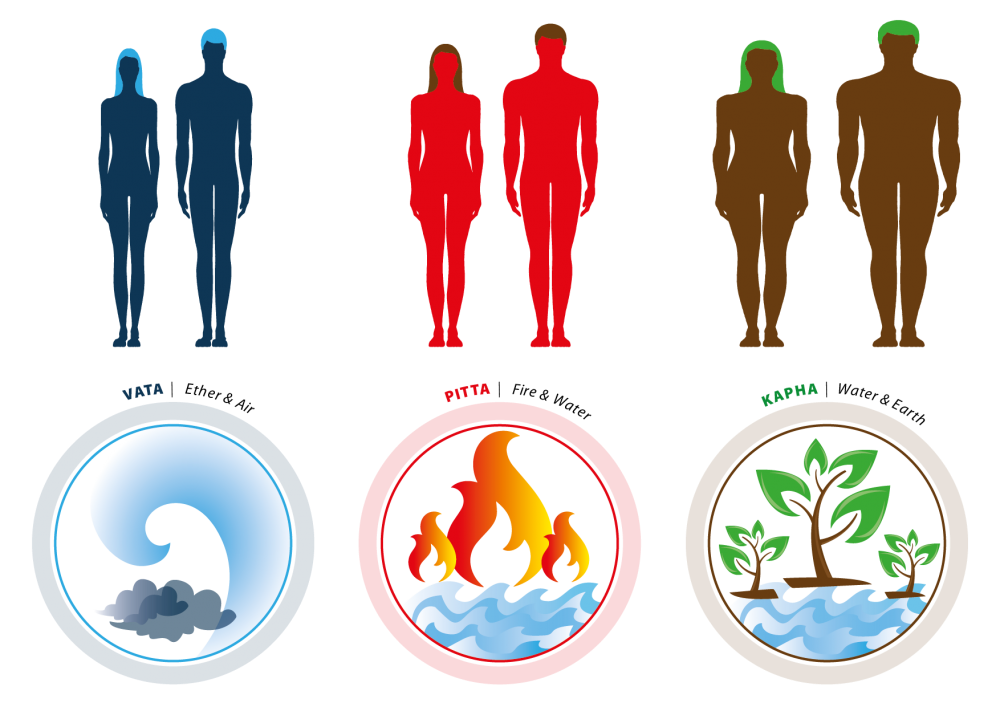According to the Ayurvedic text, the Charaka Samhita Pitta dosha is made up of fire and water elements. Pitta dosha is based on the principles of transformation. All Pitta dosha living organisms undergo transformation to sustain their existence with a combination of fire and water. Pitta dosha controls the functioning of the metabolism, digestive system, glands and enzymes in the body. They affect the quality and quantity of energy produced by and in the body. The main qualities of an individual who has a dominating Pitta dosah includes light, hot, pungent, sharp, fluidity, acidic and oily characteristics. People with strong Pitta dosha have a strong fiery nature that exhibits through their physical actions and mental thoughts.
 Being fiery in nature, it is imperative to keep Pitta dosha in balance, for when unbalanced these individuals tend to get short-tempered and argumentative, and suffer from digestion and gland related ailments. A Pitta balancing diet should be based on heavy and cooling foods to counter-effect the fluid and fiery nature of this dosha. A Pitta diet should include foods with bitter, astringent and sweet taste, and reduce the consumption of salty, pungent and sour foods. Following is a list of what should be eaten and what should be preferably avoided or eaten in moderation to balance Pitta dosha:
Being fiery in nature, it is imperative to keep Pitta dosha in balance, for when unbalanced these individuals tend to get short-tempered and argumentative, and suffer from digestion and gland related ailments. A Pitta balancing diet should be based on heavy and cooling foods to counter-effect the fluid and fiery nature of this dosha. A Pitta diet should include foods with bitter, astringent and sweet taste, and reduce the consumption of salty, pungent and sour foods. Following is a list of what should be eaten and what should be preferably avoided or eaten in moderation to balance Pitta dosha:
Vegetables: Consumption of freshly cooked vegetables such as cucumbers, potatoes, sweet potatoes, green beans, lettuce, asparagus, pumpkins, broccoli, cauliflower and Brussels sprouts is very good.Whereas consumption of certain nightshade vegetables such as tomatoes, beets, eggplant, carrots, peppers, garlic, onion, spinach should be reduced, if not avoided.
Fruits: Cooling sweet fruits as grapes, oranges, plums, pineapples, mangoes, melons, cherries, coconuts, avocados, pomegranates are highly recommended, whereas sour fruits like certain berries and grapefruits should be avoided.
Dairy Products: The natural sweetness present in milk, butter and ghee can prove to be very beneficial for balancing the heat release of Pitta dosha. Pudding made with milk should be eaten at least thrice a week. Luke-warm milk should be consumed an hour before or after meals. Vegetables and cereals should be cooked in moderate amounts of ghee or clarified butter. Fermented sour milk produce such as yogurt, cheese and sour cream should be consumed sparingly.
Spices and Nuts: Dates and almonds are the only dry fruits recommended for Pitta dosha, and in moderation. Only cooling spices such as saffron, cardamom, coriander and fennel should be used regularly, whereas very hot spices such as chilies, red pepper and cayenne should be completely avoided. Use of slightly hot spices like ginger, cloves, black pepper should be in moderation.
Grains and Beans: Pitta reducing grains include rice (white, brown and red), barley, wheat and oats, whereas corn, rye and millet can cause imbalance to Pitta dosha. Mung beans, chickpeas, Tofu and other soybean products are best for Pitta pacification.
Meat: Fresh white meat of chicken, shrimp and turkey are recommended in moderation, and reduction of red meat, eggs and beef is advised to balance Pitta.
A Pitta balancing diet should include cooling, naturally sweet, bitter and astringent foods, with avoidance of warming, pungent, sour and salty foods and Pitta Balancing Herbal Tea. One can opt for cool sweet coconut water instead of cold beverages. Pitta dosha, when kept in balance ensures a good digestive functioning, and enhanced intelligence.
You can learn the techniques of stress reduction, mind and thoughts control and start emotional healing in 7 days retreat. The Emotional Healing Retreat in Costa Rica will help you to start the process of healing your emotions; will teach you stress management and stress reduction techniques , including all mentioned above and much more.
